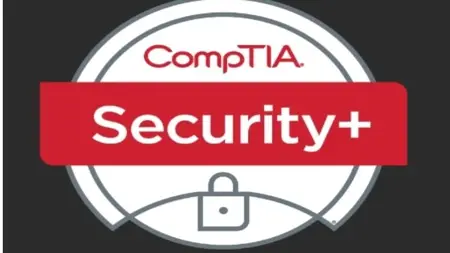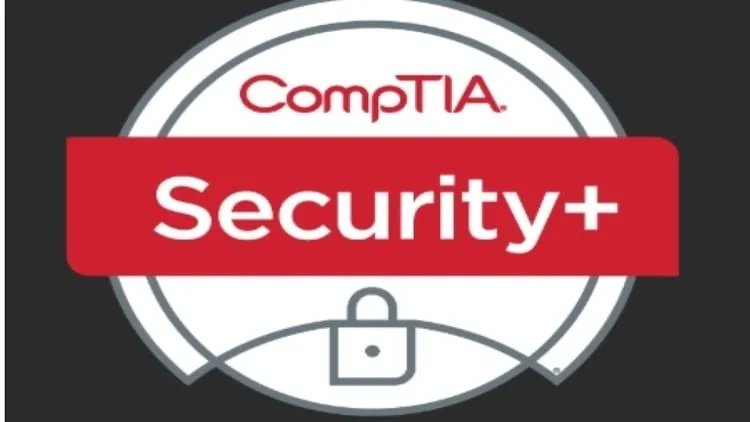Comptia Security+ 701 Exam Course
Published 8/2025
Duration: 7h 55m | .MP4 1280x720 30 fps(r) | AAC, 44100 Hz, 2ch | 2.59 GB
Genre: eLearning | Language: English
Published 8/2025
Duration: 7h 55m | .MP4 1280x720 30 fps(r) | AAC, 44100 Hz, 2ch | 2.59 GB
Genre: eLearning | Language: English
Third Level Technology is proud to offer the CompTIA Security+ 701 Exam Course.
What you'll learn
- Domain 1.0 : General Security Concepts
- Domain 2.0 : Threats Vulnerabilities and Mitigations
- Domain 3.0 : Security Architecture
- Domain 4.0 : Security Operations
- Domain 5.0 : Security Program Management
Requirements
- Comptia recommends 2 years of IT hands-on experience
Description
Third Level Technology is proud to offer the CompTIA Security+ 701 Exam Course. TLT is the leading provider of CompTIA instruction on the Spotify platform and excited to begin offering our educational materials on Udemy!
The CompTIA Security+ 701 Exam is a foundational IT certification within the area of cybersecurity and a requirement for many fields that require security clearance levels. This course will cover and review all of the Exam Objectives sequentially. It is recommended to have a copy of the Security+ 701 Exam Objectives as you go through this course.
This course will cover the following topics and modules in sequential order:
Module 1 : General Security Concepts
Module 2 : Threats, Vulnerabilities & Mitigations
Module 3 : Security Architecture
Module 4 : Security Operations
Module 5 : Security Program Management & Oversight
MODULE 1 : GENERAL SECURITY CONCEPTS
1.1 : Security Control Types -Compare and contrast various types of security controls.
1.2 : Physical Security & Fundamentals -Summarize fundamental security concepts.
1.3 : Change Management -Explain the importance of change management processes and the impact to security.
1.4 : Encryption & Cryptography -Explain the importance of using appropriate cryptographic solutions.
MODULE 2 : THREATS, VULNERABILITIES & MITIGATION
2.1 : Threat Actors & Motivations -Compare and contrast common threat actors and motivations.
2.2 : Threat Vectors & Attack Surfaces -Explain common threat vectors and attack surfaces.
2.3 : Vulnerability Types -Explain various types of security threats, malware, and vulnerabilities.
2.4 : Malicious Activity Indicators -Given a scenario, analyze indicators of malicious activity.
2.5 : Enterprise Mitigation -Explain the purpose of mitigation techniques used to secure the enterprise.
MODULE 3 : SECURITY ARCHITECTURE
3.1 : Architecture Model Security -Compare and contrast security implications of different architecture models.
3.2 : Enterprise Infrastructure Security -Given a scenario, apply security principles to secure enterprise infrastructure.
3.3 : Data Protection -Compare and contrast concepts and strategies to protect data.
3.4 : Resilience & Recovery -Explain the importance of resilience and recovery in security architecture.
MODULE 4 : SECURITY OPERATIONS
4.1 : Securing Computing Resources -Given a scenario, apply common security techniques to computing resources.
4.2 : Data Management & Disposal -Explain the security implications of proper hardware, software, and data asset umanagement.
4.3 : Vulnerability Management -Explain various activities associated with vulnerability management.
4.4 : Security Alerts & Monitoring -Explain security alerting and monitoring concepts and tools.
4.5 : Enterprise Security Enhancements -Given a scenario, modify enterprise capabilities to enhance security.
4.6 : Identity & Access Management -Given a scenario, implement and maintain identity and access management.
4.7 : Automation & Scripting -Explain the importance of automation and orchestration related to secure operations.
4.8 : Incident Response -Explain appropriate incident response activities and recovery steps.
4.9 : Investigative Data Sources -Given a scenario, use data sources to support an investigation.
MODULE 5 : SECURITY PROGRAM MANAGEMENT & OVERSIGHT
5.1 : Security Governance -Summarize elements of effective security governance.
5.2 : Risk Management Process -Explain elements of the risk management process.
5.3 : Vendor Risk Assessment -Explain the processes associated with third-party risk assessment and management.
5.4 : Security Compliance -Summarize elements of effective security compliance.
5.5 : Audits & Assessments -Explain types and purposes of audits and assessments.
5.6 : Security Awareness Best Practices -Given a scenario, implement security awareness practices.
Best of luck in your Studies! Thanks for joining!
Who this course is for:
- This course will help students prepare and pass the Comptia Security+ 701 exam.
More Info



